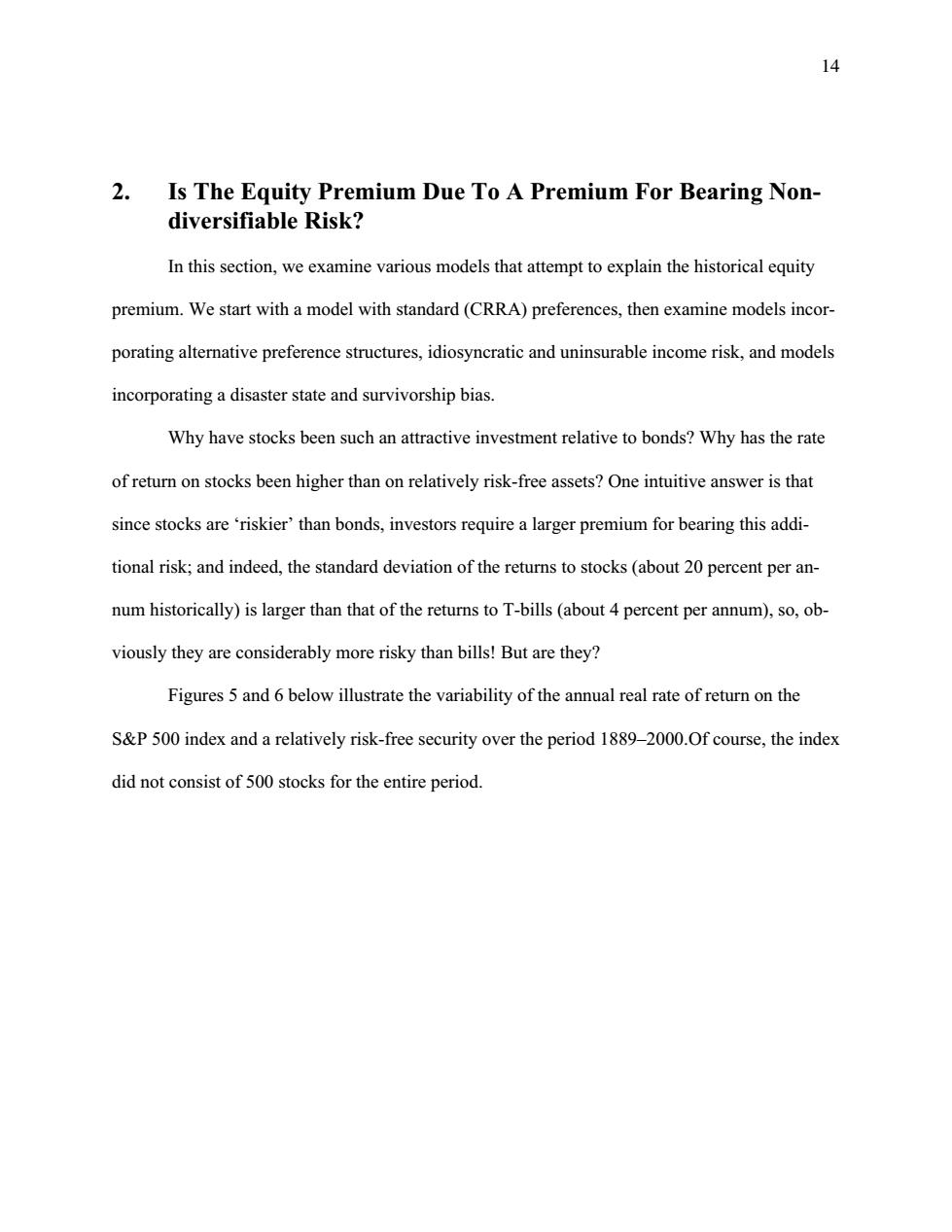正在加载图片...

14 2. Is The Equity Premium Due To A Premium For Bearing Non- diversifiable Risk? In this section,we examine various models that attempt to explain the historical equity premium.We start with a model with standard(CRRA)preferences,then examine models incor- porating alternative preference structures,idiosyncratic and uninsurable income risk,and models incorporating a disaster state and survivorship bias. Why have stocks been such an attractive investment relative to bonds?Why has the rate of return on stocks been higher than on relatively risk-free assets?One intuitive answer is that since stocks are 'riskier'than bonds,investors require a larger premium for bearing this addi- tional risk;and indeed,the standard deviation of the returns to stocks (about 20 percent per an- num historically)is larger than that of the returns to T-bills(about 4 percent per annum),so,ob- viously they are considerably more risky than bills!But are they? Figures 5 and 6 below illustrate the variability of the annual real rate of return on the S&P 500 index and a relatively risk-free security over the period 1889-2000.Of course,the index did not consist of 500 stocks for the entire period.14 2. Is The Equity Premium Due To A Premium For Bearing Non- diversifiable Risk? In this section, we examine various models that attempt to explain the historical equity premium. We start with a model with standard (CRRA) preferences, then examine models incorporating alternative preference structures, idiosyncratic and uninsurable income risk, and models incorporating a disaster state and survivorship bias. Why have stocks been such an attractive investment relative to bonds? Why has the rate of return on stocks been higher than on relatively risk-free assets? One intuitive answer is that since stocks are ‘riskier’ than bonds, investors require a larger premium for bearing this additional risk; and indeed, the standard deviation of the returns to stocks (about 20 percent per annum historically) is larger than that of the returns to T-bills (about 4 percent per annum), so, obviously they are considerably more risky than bills! But are they? Figures 5 and 6 below illustrate the variability of the annual real rate of return on the S&P 500 index and a relatively risk-free security over the period 1889–2000.Of course, the index did not consist of 500 stocks for the entire period